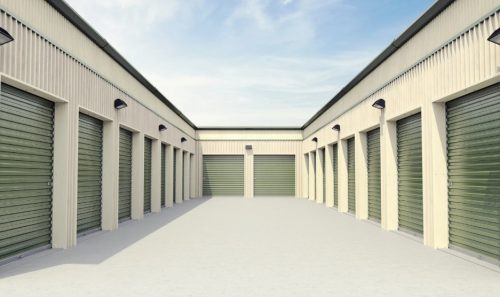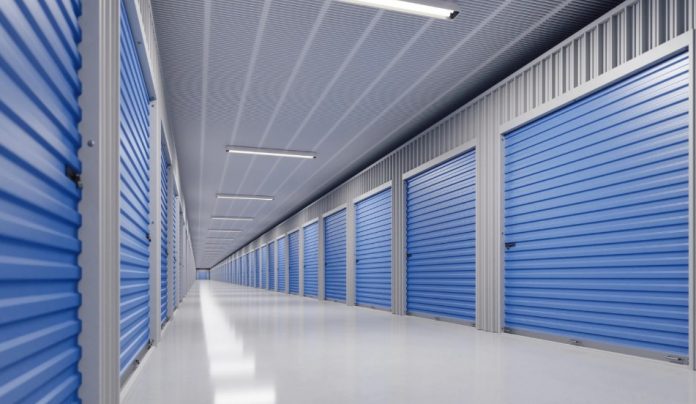Self-storage is big business in the UK. In fact, it just smashed through the £1.08 billion annual revenue mark (UK Self Storage Annual Report 2024).
That’s a lot of people renting space to keep their stuff safe.
But does that mean it’s a good business to get into in 2025? Well, that depends on who you ask.
The industry has been expanding steadily, with an 8.1% rise in storage space in 2023, bringing the total to 60 million square feet (UK Self Storage Annual Report 2024). That’s triple what was available in 2005.
And yet, the UK still has less self-storage per person than countries like Australia and the US, where storage is more ingrained in daily life. Over there, it’s almost an extension of the home.
Here, it’s often seen as a stopgap for house moves, renovations, or life events like divorce and bereavement.
Is Self-Storage A Good Business in 2025?
A Business That Just Keeps Growing
 If there’s one thing self-storage operators love, it’s how long customers tend to stick around. Many think they’ll only need a unit for a few months but end up keeping it for years.
If there’s one thing self-storage operators love, it’s how long customers tend to stick around. Many think they’ll only need a unit for a few months but end up keeping it for years.
In fact, two-thirds of customers have been renting their unit for about two years, and 16% have had theirs for five or more (Cushman & Wakefield / SSA UK study 2022).
People’s homes aren’t getting any bigger, but their possessions keep piling up. The high cost of housing and shrinking floor space mean self-storage is often a cheaper alternative to moving to a bigger home.
It’s no surprise that demand is still rising. There are plans for 280 new storage sites by 2026, a 10%+ increase in facilities across the UK (Cushman & Wakefield / SSA UK study 2022). That’s a strong sign that operators believe there’s plenty of room for more growth.
The Money Side of Things
It’s all well and good having customers, but is there real money in self-storage? The short answer is yes, but it’s not quite as simple as just buying some units and watching the cash roll in.
The average rental return has ticked up slightly to £26.23 per square foot (UK Self Storage Annual Report 2024), and while that’s solid, there are a few warning signs.
Occupancy rates have dipped by 2.5 percentage points, and the churn rate has jumped from 81% to 98% in the past year (UK Self Storage Annual Report 2024). That means more people are moving in and out, which can lead to higher marketing costs and the hassle of finding new tenants more often.
That said, storage businesses tend to run on relatively low overheads. Many facilities now operate with no permanent staff on-site (UK Self Storage Annual Report 2024), relying on automation and remote monitoring.
AI is creeping into the industry too, with 25% of businesses using it for security and operations (UK Self Storage Annual Report 2024). That helps cut costs, but also raises questions about how far businesses can go before customers start wanting a more human touch.
Tech, Sustainability, and the Future of Storage
 One of the biggest shifts happening in the industry is around sustainability. 95% of self-storage operators say adding sustainability features has increased the value of their business (UK Self Storage Annual Report 2024).
One of the biggest shifts happening in the industry is around sustainability. 95% of self-storage operators say adding sustainability features has increased the value of their business (UK Self Storage Annual Report 2024).
That’s a big jump from last year and suggests customers and investors alike are paying more attention to things like energy efficiency and green building materials.
Then there’s technology. Self-storage is moving towards a more digital-first experience, with 86% of companies offering online booking and payments (UK Self Storage Annual Report 2022).
AI is also making an entrance, helping businesses track customer patterns, manage security, and optimise pricing.
But despite all these changes, the basic model of self-storage remains the same: people need space, they’re willing to pay for it, and as long as facilities are in the right locations, they’ll keep making money.
So, Is It a Good Business?
Self-storage is still a growing industry. The UK market has plenty of room to expand, and customer habits suggest storage units aren’t a short-term fix – they’re becoming a long-term necessity. But while the market is thriving, it’s not without its challenges.
The dip in occupancy and rising churn rates suggest competition is heating up. New players will need to think carefully about location, pricing, and how they attract and keep customers.
Throw in the cost-of-living crisis, and it’s fair to wonder whether demand will continue at the same pace.
That said, self-storage has proven to be one of the more resilient sectors in real estate. It survived the financial crash of 2008, held up well during COVID, and continues to bring in billions each year.
If you’re thinking about getting into the business, it’s not a bad time – but as with any investment, research is key.
This isn’t financial advice, just a look at where the industry stands. If the last few years have shown anything, it’s that people aren’t letting go of their stuff anytime soon. And as long as that’s the case, self-storage will be a business worth watching.
Please note, this is not financial advice, just guidance based on recent statistics


































